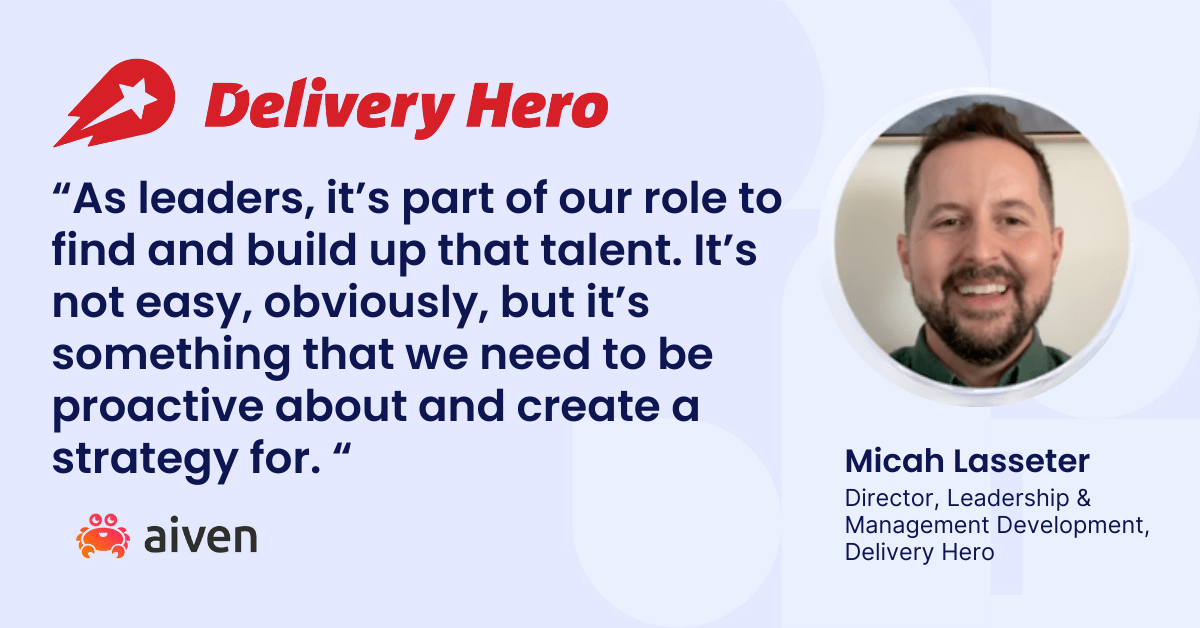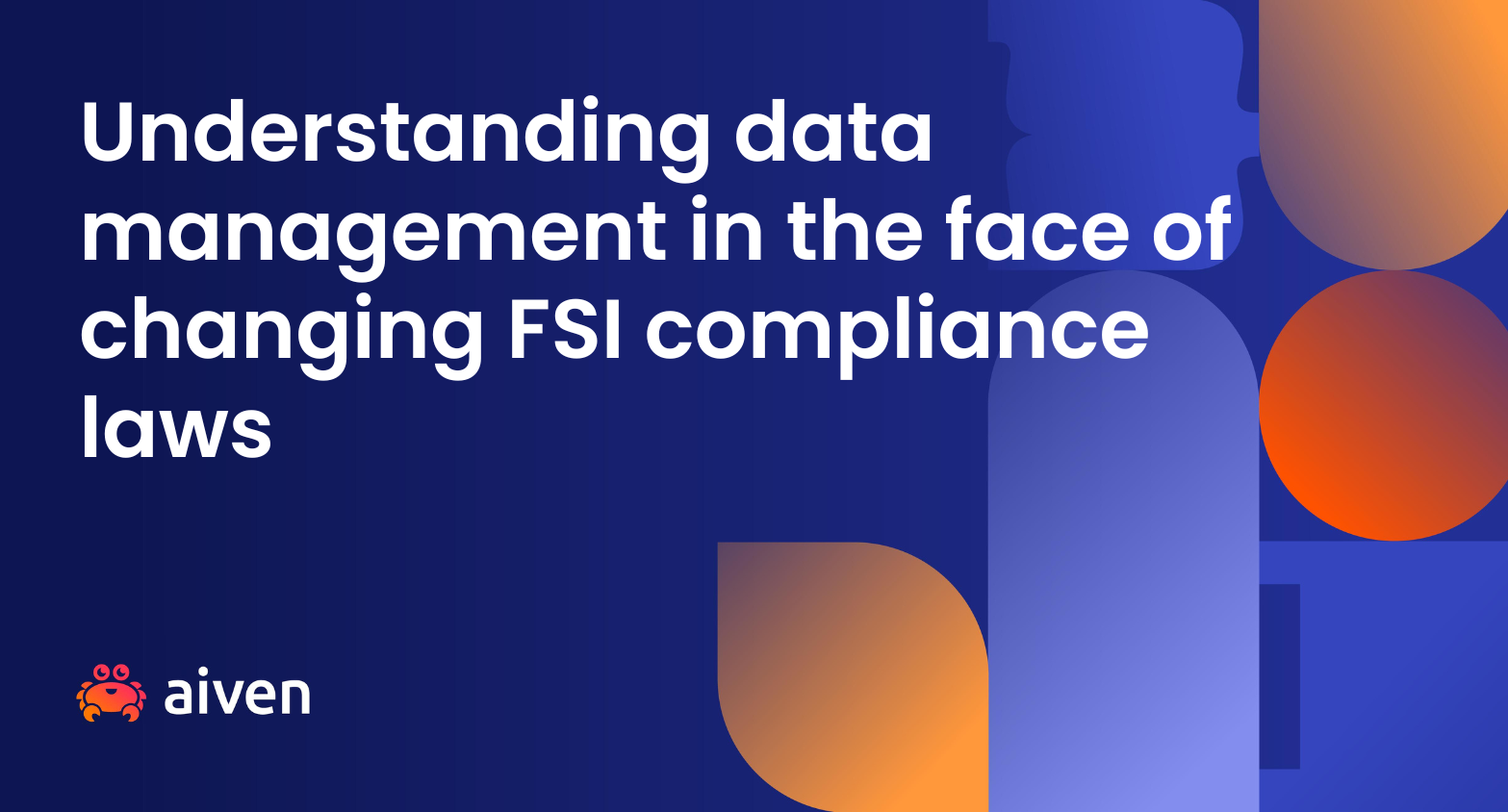Aug 28, 2024
The digitalized brick-and-mortar retail renaissance
This blog examines how smart retailers are blending the latest technology with their traditional brick-and-mortar stores to deliver outstanding customer experiences.
John Kennedy
|RSS FeedHead of Databases, Product at Aiven
Steve Jobs, who famously encouraged us to "think differently," emphasized the importance of customer experience by saying, “You’ve got to start with the customer experience and work back toward the technology – not the other way around.”
Successful brick-and-mortar retailers responding to the so-called “retail apocalypse” have followed this principle. Instead of investing in technology without a strategy, these smart retailers have focused on enhancing the in-store experience. They aim to make shopping more convenient and enjoyable, ensuring a customer-friendly environment.
The phygital world of retail
Blending the in-store and digital experience is a concept known as ‘phygital,’ and it’s something that we as digitally-native consumers now expect. Retailers must seamlessly marry the on and offline experience to be successful. According to Covo, 91% of consumers expect their online experience to meet or surpass that of in-store shopping.
Until recently, many of the innovations we are familiar with were not possible or delivered in a clumsy manner, such as user-unfriendly applications like chatbots. But the advent of Generative AI is changing everything. It is enhancing not just how customers interact with products, but also enabling retailers to streamline their operations.
Demonstrating the art of the possible
Equipping brick-and-mortar stores with technology has been a trend bubbling under the surface for some time. The Amazon 'Scan and Go' mobile payment systems were one of the first incarnations — if for no other reason than to demonstrate the art of the possible. Today, there are many examples of brands that have followed suit. Cosmetics manufacturer, Lush, uses an app as the primary source of product information through scannable codes. H&M has digital vending machines to help shoppers find their beauty and fragrance preferences, and walk-in consumers can get a free virtual workout at the GymShark Oxford St. store in London.
The emergence of AI and other technologies supporting the real-time exchange of information has also enabled the online aspect of retail to improve alongside the physical. For instance, Walgreens uses data from the number of antiviral prescriptions to track the spread of the flu. The online, interactive map not only helps customers understand how bad the flu is in their area, but also helps Walgreens stock more inventory of flu-related products in highly infected regions.
Beyond improving the customer experience, retailers are also using AI to significantly boost their operational efficiency. By analyzing customer buying behaviors and other data points, AI helps retailers make precise decisions about purchasing stock and staffing levels. For example, AI systems analyze trends, including historical sales data and external factors like weather, to accurately forecast product demand. What’s more, AI's capability to dynamically adjust pricing based on demand forecasts and competitive analysis enables retailers to maximize the bottom line.
Retail’s transition from the old world to the new
Today’s retailers need to provide an outstanding customer experience both in-store and online to remain competitive. Retailers require technology that can handle fluctuating demand throughout the year without compromising scalability, flexibility, or performance.
Additionally, retailers need to modernize their data infrastructure by moving from monolithic applications towards nimble microservices where data is captured, processed and used as needed. A service-oriented architecture is fundamental because it lets retailers know which components they need to scale, how much, and when. The outcome is more efficient performance and a better customer experience.
Retailers need a data platform that enables them to fulfill these requirements. Our AI and data platform is designed to provide a versatile, reliable, and cost-effective way to build the data services that make a tangible difference to the customer experience. Here at Aiven, we’re already working with some of the biggest names in retail, helping them scale their business with open source data infrastructure to positively impact revenue and the customer experience.
Transforming the traditional shopping experience
The fusion of physical stores with high-tech, online capabilities is transforming the traditional shopping experience into something much more dynamic and customer friendly. This trend is only going to continue, and retailers must take steps to ensure their architecture and data practices are built effectively to keep up.
Whether it’s through better infrastructure performance, improved search and discoverability, or faster insight into operational data, how retailers blend the on and offline elements of their stores will be a defining element of their competitiveness in the coming years.
Stay updated with Aiven
Subscribe for the latest news and insights on open source, Aiven offerings, and more.



